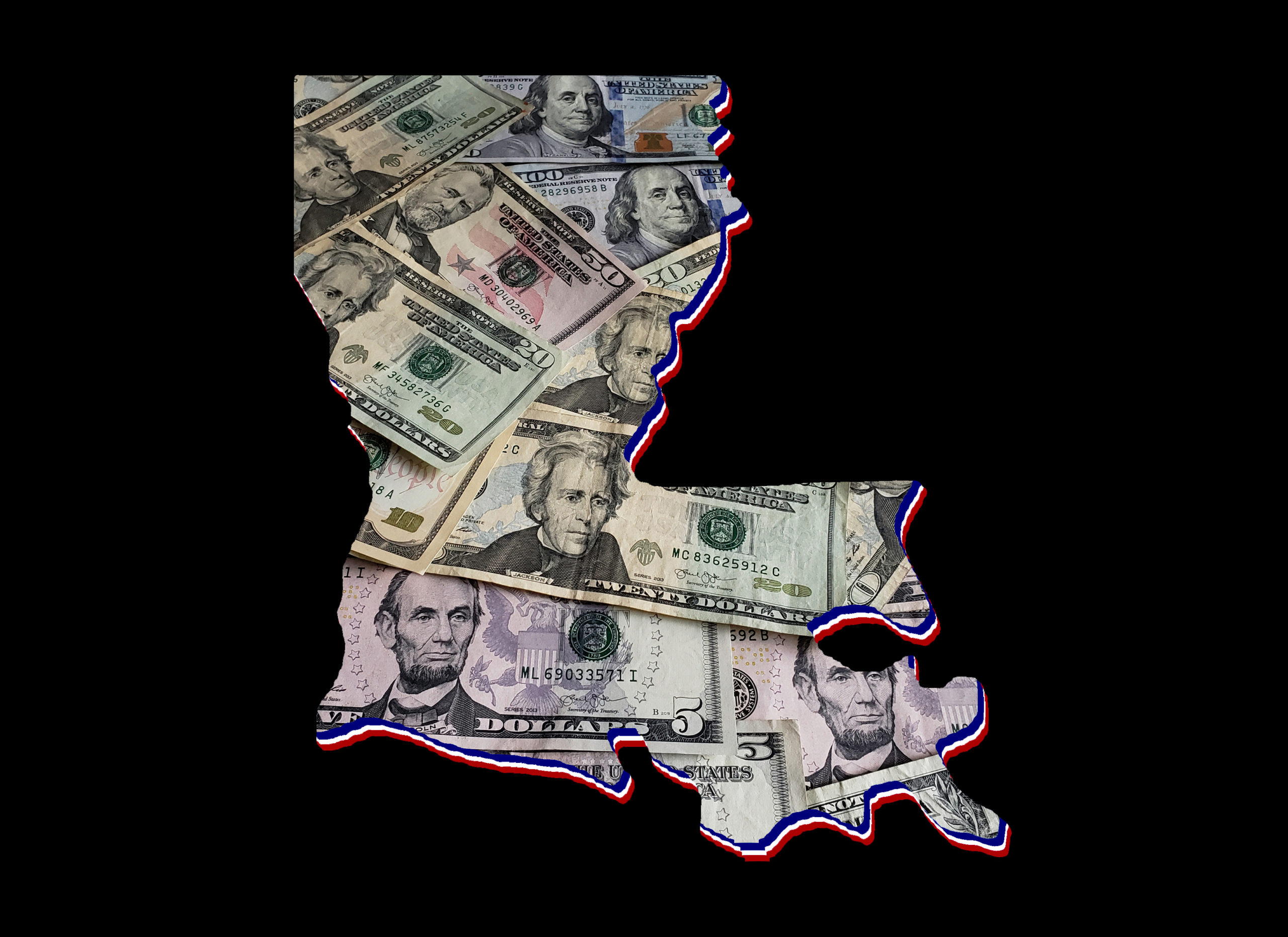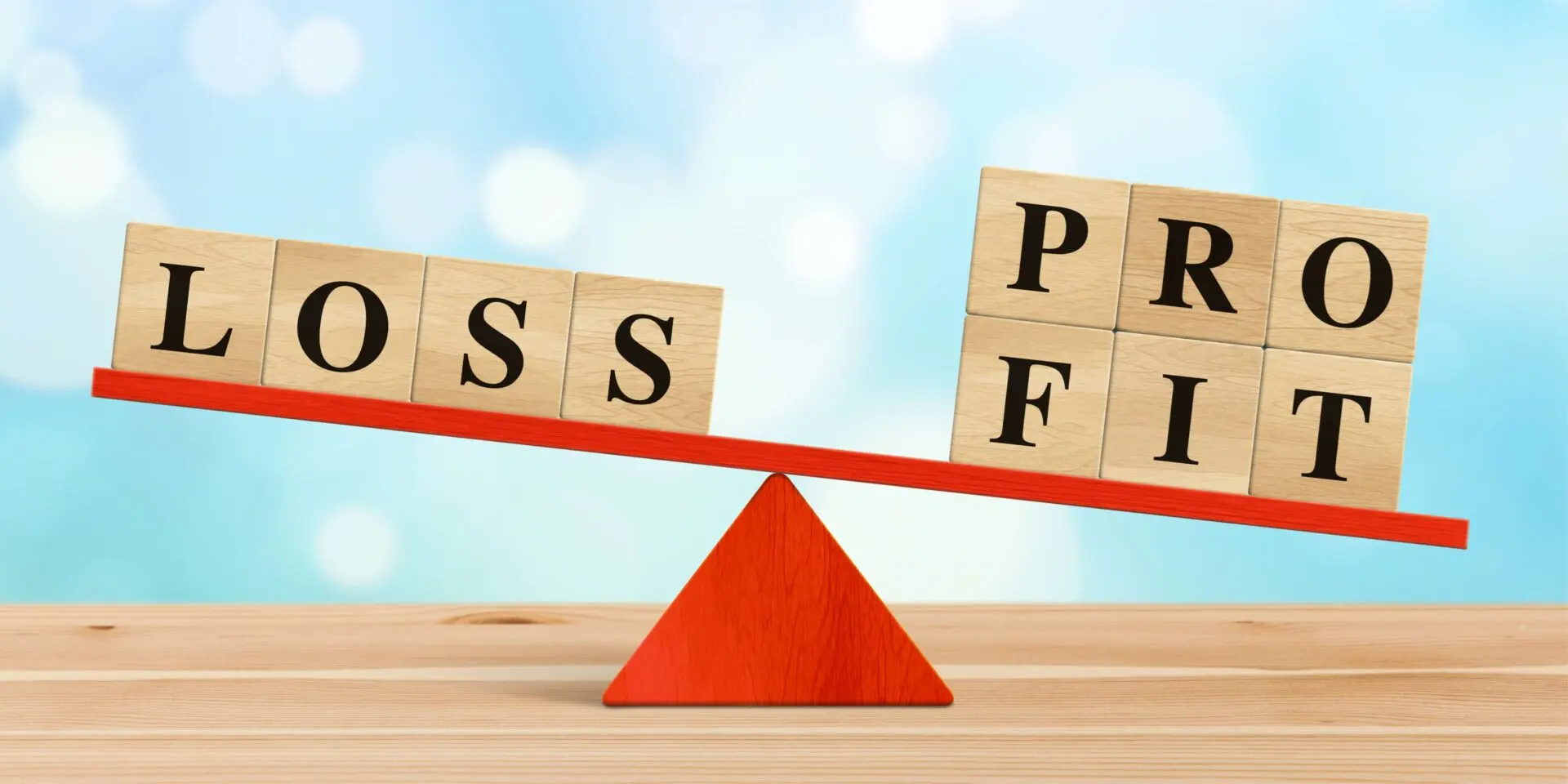In December of 2024, Governor Jeff Landy signed into law a legislative package comprising numerous bills and making sweeping changes to the Louisiana tax code and its applications to both individuals and corporations.
Some of the more significant highlights include:
Individual Income Taxes
 The three-tier calculation (1.85%, 3.5%, and 4.25% for tax years 2022 through 2024) of personal income tax has been replaced with a flat rate of 3% for all brackets.
The three-tier calculation (1.85%, 3.5%, and 4.25% for tax years 2022 through 2024) of personal income tax has been replaced with a flat rate of 3% for all brackets.
While this represents a significant increase for the lowest prior tax bracket, with reductions for the middle and upper tiers, that is not the only factor to consider.
The standard deduction was increased from $4,500 for single filers and $9,000 for married joint filers to $12,500 and $25,000, respectively, to be adjusted for inflation on an annual basis beginning in 2026.
.
In addition, the tax exemption for retirement income has doubled, from $6.000 to $12,000, which, again starting in 2026, will also be adjusted for inflation annually.
Corporate Taxes
 On the corporate front, the flat tax rate drops from 7.5% to 5.5%―a significant savings for business.
On the corporate front, the flat tax rate drops from 7.5% to 5.5%―a significant savings for business.
In another piece of good news for Louisiana’s larger corporations, the corporate franchise tax on those businesses with over $500 million in annual revenue was eliminated.
Further, the new legislation establishes a bonus depreciation deduction of up to 100%, or full expensing, of the cost of business property and related expenses during the year the costs were incurred, rather than depreciating them over the officially estimated course of its useful life.
But there’s always an offset.
Sales & Use Taxes
 Louisiana’s sales and use tax (when combined with local sales taxes, we rank very high on sales taxes among the 50 states) rises from 4.45% to 5%, effective for tax years 2025 through 2029. Beginning in 2030, the sales tax will drop to 4.75%.
Louisiana’s sales and use tax (when combined with local sales taxes, we rank very high on sales taxes among the 50 states) rises from 4.45% to 5%, effective for tax years 2025 through 2029. Beginning in 2030, the sales tax will drop to 4.75%.
The vendor’s compensation cap, which represents the limitation on the 1.05% of sales and use tax revenues collected by a given vendor which are allowed to be retained by that vendor, has been cut in half, dropping from $1,500 to $750 each calendar month. The cap applies to each vendor, whether that vendor has one or numerous locations at which sales and use taxes are collected.
Further, the new legislation provides that the vendor’s compensation is now only to be calculated on certain of the sales and use taxes, which effectively reduces the 1.05% compensation rate to 0.84%.
Other Notable Tax Changes
 The legislation includes caps on some existing tax credits, and the repeal or sunsetting of other tax credits and initiatives.
The legislation includes caps on some existing tax credits, and the repeal or sunsetting of other tax credits and initiatives.
New tax credit caps include those pertaining to:
- Motion Picture Production Tax Credit―Issuance of final certification of applications for this credit received by the Louisiana Department of Economic Development (DED) on or after July 1, 2025, will be limited to $125 million annually, down from $150 million. Also reduced to $125 million (from $180 million) is the annual cap on claiming or transferring such credits. No unused portion of an annual permissible amount may be carried over into later years.
- Research & Development Tax Credit―This credit has been capped at $12 million for claims on tax returns due on or after July 1, 2025. Unused portions of the capped amount may not be carried over into subsequent years.
- Rehabilitation of Historic Structures Tax Credit―For Part II applications received by the Louisiana Department of Culture, Recreation and Tourism on or after January 1, 2025, the annual cap on this tax credit decreases to $85 million from $125 million. Again, no unused capped amounts may be carried over into later years.
The list of tax credits and initiatives being eliminated or allowed to sunset is a long one―but quite a good portion of these are already technically expired or underutilized.
Let Rigby Financial Group’s tax experts help you make the most of the new tax reductions and mitigate the impact of the accompanying limitations and caps.
Please click here to email us directly helping you is our mission and our passion!
Until next time —
Peace,
Eric
On Monday, June 16, 2025, the U.S. Senate Finance Committee (Committee) released its preferred vision of proposed tax changes for the budget reconciliation bill Congress hopes to pass by July 4, 2025.
The Senate is considering preparing its own version of the reconciliation bill, in compliance with rules and criteria which would exempt the bill from a super-majority approval requirement.
While the Senate version has many similarities to the U.S. House of Representatives’ (House) One Big Beautiful Bill Act’s (OBBB Act) provisions, there are changes, and the Committee’s tax proposals remain incomplete at this time, despite being 160 pages longer than the entire House tax portion of the OBBB Act (549 v 389).
One section on tax treatment of some international businesses is marked only as “Reserved,” and the released document notes, “further refinements to the text included in the House-passed H.R. 1 with respect to the Trump accounts program continue to be developed and finalized in coordination with the Trump Administration.”
Among the highlights of the Senate’s tax provisions, as distinct from the House OBBB Act, are:
Individual Tax Provisions
 The OBBB Act proposed an increased standard deduction for tax years 2025 through 2028 of $13,000 for individual filers and $26,000 for married joint filers, up from $12,000 and $24,000, respectively.
The OBBB Act proposed an increased standard deduction for tax years 2025 through 2028 of $13,000 for individual filers and $26,000 for married joint filers, up from $12,000 and $24,000, respectively.
The Senate proposal would increase the deduction to $16,000 for individual filers and $32,000 for married joint filers..
The state and local tax (SALT) cap differs significantly. The OBBB Act proposed to increase the cap from its current $10,000 to $20,000 for single filers and $40,000 for married joint filers, phasing down to $30,000 depending on income.
The Senate proposes:
- Retaining the $10,000 cap (although this is one of the provisions subject to ongoing discussion).
- Providing a specific list of taxes subject to the cap, and another of taxes not subject.
- Implementing changes which would prevent taxpayers’ avoidance of the SALT cap.
- Specifying certain payments which substitute for specified SALT cap-subject taxes be considered subject as well.
- Granting the U.S. Department of the Treasury (Treasury) authority to issue regulations intended to prevent avoidance of the SALT cap.
The OBBBA proposed increasing the child tax credit from $2,000 to $2,500 per child, for tax years 2025 through 2028, decreasing to an inflation-adjusted $2,200 after that. The Senate proposes the credit be increased to $2,200, adjusted for inflation, permanently.
Business Tax Provisions
 The Senate proposal would, unlike the House’s version, make 100% bonus depreciation permanent. This would represent an enormous benefit to businesses.
The Senate proposal would, unlike the House’s version, make 100% bonus depreciation permanent. This would represent an enormous benefit to businesses.
The OBBB Act proposed tightening limitations to state and local tax (SALT) cap workarounds used by some businesses.
The Senate has suggested some specific limitations to such workarounds.
For certain provisions which may impact businesses and/or individuals, see the below:
Section 199A
 Section 199A of the 2017 Tax Cuts and Jobs Act (TCJA) allows domestic pass-through business owners to deduct up to 20% of qualified business income (QBI) from their individual income tax returns, subject to certain income limitations.
Section 199A of the 2017 Tax Cuts and Jobs Act (TCJA) allows domestic pass-through business owners to deduct up to 20% of qualified business income (QBI) from their individual income tax returns, subject to certain income limitations.
The OBBB Act proposed upping the ante to a 23% deduction and making the deduction permanent.
Like the TCJA, the OBBB Act would keep owners of SSTBs ineligible for deduction of QBI.
The Senate, too, would make the QBI deduction permanent, but keep it limited to 20% of QBI.
They do not propose, however, excluding SSTB owners any longer, but would phase in applicability for these and other entities subject to the limitation on wages and investments of an increased deduction of $75,000 for individuals and $150,000 for married joint-filers (currently $50,000 and $100,000, respectively).
The Senate bill would also institute a $400-minimum deduction for individuals from active trades or businesses in which they “materially” participate.
These represent only a few highlights and are by no means exhaustive. At this point, we cannot know what any final resolution bill might look like, after the horse-trading between the two Chambers, and with the Administration, concludes.
However, it never hurts to think and plan ahead―and the initial Senate proposals shed at least a little more light on likely tax changes coming.
We invite you to consult Rigby Financial Group’s tax planning experts. We would love to help you assess potential personal and / or business scenarios based on various assumptions and aid your navigation through them.
Please click here to email us directly―our team is always at your service―the reason we’re here at all is to be here for you!
Until next time –
Peace,
Eric
For previous posts on the House OBBB Act, see:
Revised House Reconciliation Bill = Tax Benefits!
Real Estate Investors Benefit via New House Reconciliation Bill’s Tax Changes
Many have noted the downtick in attendance at this year’s Jazz Fest―especially the first Thursday and Friday. Overall attendance was about 460,000, down from last year’s total of around 500,000. But last year offered The Rolling Stones’ first-ever appearance at the festival. It was also lower than 2022’s 475,000 tally, but that followed two years of the Festival’s being cancelled.
We can ascribe potential reasons for this downturn―inflationary pressure on household budgets means less travel and leisure spending. Quite possibly the horrific New Year’s terrorist attack had a cautionary impact. And maybe, too, as we mark the fourth annual Festival following two years (2020 and 2021) when COVID played havoc with us all, and cancelled our beloved Jazz Fest, people are lulled, thinking it will always be there next year, and the year after, and so on. I hope it will―but each Jazz Fest is both sister to its predecessors and unique in itself.
So if that last possibility describes your feelings, I urge you to seize your opportunities. Jazz Fest will almost certainly still be with us, but none of us knows whether we will be.
Carpe diem! Carpe musica!
And 460,000 is still plenty of music lovers; the music always raises―and nourishes―our hearts, minds, and souls. It also seems to bring out the best in so many of us, and that’s one of the things I love most about the experience, year after year. I can never get tired of it all.
For the first time in many years, business took me out of town for JazzFest’s first weekend. I hope that won’t happen again any time soon. Normally, I have attended six of the seven or eight (depending on the year’s schedule) days of Jazz Fest, showing up for Fridays through Sundays. This year, I could only make three, the second weekend.
I was thereby spared the dilemma of choosing whether to close the first Friday with Kacey Musgraves, Gladys Knight, Buckwheat Zydeco Jr., or another band, or to hop around. Or, on the first Saturday, choosing among Lil Wayne & The Roots, Diana Krall―if you don’t know how good she is (Elvis Costello does: they’ve been married for quite some years), I urge you to find out―she’s great, the legendary Taj Mahal, and our own Harry Connick, Jr. (who did so much good service for those who weren’t able to get out of the city during the days following Hurricane Katrina―can it really be 20 years ago? It hardly seems possible!).
But those are the dilemmas we New Orleans music aficionados love to have!
I missed out on the great Miss Irma Thomas’ first two appearances, including her main show the first Saturday, on the Shell Gentilly Stage, and what must have been an amazing interview on the Alison Miner Music Heritage Stage the following day. Those were the first two of four appearances the now 84-year-old legendary Queen of Jazz Fest graced the event with. How on earth does she do it? I have no idea, I’m just glad she can and does honor us, year after year. I hope she’ll still be singing for us when she turns 100.
But her second two appearances the following weekend, with The Gospel Soul of Irma Thomas (which was the subject of the interview) my first day there (Friday, May 2) in the Gospel Tent, of course, and as special (so special!) guest for Galactic’s set on the Festival Stage the closing Sunday, were available to this grateful fan.
And if I wanted dilemmas as to closing acts, I sure got them! Sadly, I missed Santana closing the Festival Stage on Thursday, May 1. But the next day one had a choice of Luke Combs, Joan Jett and the Blackhearts, The Wailers, featuring Julian Marley (one of Bob Marley’s musical sons), and, of course, more. Pearl Jam, Laufey, Kenny Wayne Shepherd with Bobby Rush, and others closed the final Saturday, and on that Sunday, competing closing acts included Trombone Shorty & Orleans Avenue, Patti LaBelle, and our beloved Kermit Ruffins―with a tribute to Louis Armstrong (New Orleans music, squared!).
Even three days of Jazz Fest is a cornucopia of musical choices―everyone can pick their favorites, and there’s something tempting for every taste.
One young couple showed their JazzFest love by getting married in the Gospel Tent―what a memory they have created for themselves and their loved ones! And for festival goers―the wedding was open to all of us.
Then, there’s always the food―crawfish bread and crawfish Monica, oysters and gumbo in variety, and so much more. Great food is as much a part of New Orleans’ heritage as great music, and, while for me the music is more vital, I would never deny I love the food, too.
But I think possibly the thing I most love about Jazz Fest is the way it brings people together―from all over the world, men, women and children, all races, all ethnicities, with all the variety of tastes music lovers can boast. What we who attend Jazz Fest, even one year of it (let alone the number I’ve been fortunate enough to enjoy), share during those hours and days, is the love of music, the spirit of unity no matter how different we may be, and again, the best that the camaraderie brings out in so very many.
That, along with the music, inspires me, year after year.
And will, I trust, continue doing so for many years to come!
We went a three year span, from the Festival of 2019 until that of 2022, with no Jazz Fest, and I felt starved for its return. But now my soul feasts again each new year, and what that means to me is immeasurable.
So, this is another of my love letters to Jazz Fest, New Orleans, music lovers, music makers generally, and Miss Irma Thomas in particular―long may they―and we―all flourish!
What did you enjoy most at this year’s Jazz Fest? Or any Jazz Fest which resonated especially with you?
Please click here to email me directly―I’d love to hear your stories―please share them. Or comment here on the website!
Until next time―
Peace,
Eric
As we discussed last week, early on the morning of Thursday, May 22, 2025, the U.S. House of Representatives (House) narrowly passed, by a vote of 215-214, a revised reconciliation bill, which will now go to the U.S. Senate.
To get the revised bill passed, the House waived a clause in its rules which requires 60% of House votes approving any increase to Federal income tax rates. While many of the revised bill’s provisions result in tax breaks, new or pertaining to provisions enacted under the Tax Cuts and Jobs Act of 2017 (TCJA) there are also some increases, as well as cuts, which were not included in the initial legislative package. A motion opposing the waiver was defeated in an 8-4 vote by the House Rules Committee.
Last week’s post focused on provisions of particular import to the real estate investment industry, namely, changes to Sections 179, 168, and 199A, but the changes to those Sections, as well as many others, are of more general interest as well.
Read our post from last week here.
Again, a significant portion of the changes relate to extending or making permanent, or adjusting, some of the provisions of the TCJA, which will be good news to many of us, if enacted.
Among the highlights of the revised tax provisions we didn’t include in last week’s post are:
Making TCJA Tax Rates & Brackets Permanent
 The revised language would permanently codify the TCJA’s adjusted income thresholds (as adjusted annually for inflation), preventing currently scheduled rate increases after 2025.
The revised language would permanently codify the TCJA’s adjusted income thresholds (as adjusted annually for inflation), preventing currently scheduled rate increases after 2025.
The revised bill maintains the seven-tier structure (10% to 37%) established under the TCJA.
Other TCJA-Related Individual Tax Provisions
 The revised bill would also provide for making permanent:
The revised bill would also provide for making permanent:
- The standard deduction level, currently $15,000 for individual filers and $30,000 for married joint filers, which would also get a temporary boost for tax years 2025 through 2028 of $1,000 and $2,000, respectively.
- The personal exemption elimination.
- The $750,000 purchase price limit on deductibility of home mortgage interest.
- The exclusion of interest paid on home equity loans from deductibility.
- The state and local tax (SALT) cap, though the cap would rise from its current $10,000 to $20,000 for single filers and $40,000 for married joint filers, phasing down to $30,000 for those with modified adjusted gross income (MAGI) of over $500,000 for married joint filers and $250,000 for single filers. For tax years between 2026 and 2033, the income threshold for the $40,000 deduction and the income at which taxpayers would be eligible only for the $30,000 deduction would increase by 1% annually, remaining at the 2033 level for future tax years.
- The child tax credit of $2,000 per child, which would increase to $2,500 for tax years 2025 through 2028, and adjust for inflation for tax years from 2029 onward.
Proposed temporary changes, effective for tax years 2025 through 2028. include:
- Tip income would be excluded from taxable income for those in industries which have traditionally afforded such income. For highly paid employees, however, this deductibility would not apply.
- Overtime pay, or the portion representing wages over and above the usual hourly wage, would also be excluded from taxable income. Again, the highly compensated (those among them who actually receive overtime pay) would be ineligible for the deduction.
- An increased standard deduction bump for those over age 65 (currently $2,000) by $4,000 for the four tax years noted.
The revised bill also rescinds the Section 68 limitation on itemized deductions, but new limitations replace it, based on the taxpayer’s income for the applicable year.
Further, it repeals the $7,500 electric vehicle tax credit for new vehicles purchased after December 31, 2026, and the $4,000 credit for used vehicles purchased after December 31, 2025.
Business Tax Provisions
 Again, we discussed changes to Sections 179, 168, and 199A in last week’s post.
Again, we discussed changes to Sections 179, 168, and 199A in last week’s post.
The changes proposed to these sections of the tax code can offer significant opportunities for businesses to which they apply.
Most of the other tax news pertaining to the revised bill is not as good for businesses.
Net operating loss (NOL) carryforwards for non-corporate filers would require treatment of “excess” business losses precisely as―business losses, rather than as net operating loss, as previously allowed.
Some provisions tighten existing limitations rules, including those pertaining to:
- SALT limitation workarounds. If your business is eligible for Section 199A treatment, breathe easy―these won’t affect you.
- Non-corporate loss limitations.
- The Section 162(m) limitation concerning executive compensation.
There would also be repeal of a number of energy-related incentives, although the clean fuel production credit established under the previous Administration and newly in force for the current tax year 2025, would be expanded, rather than eliminated.
Temporary business tax provisions include:
- Restoration of the 100% bonus depreciation for short-lived investments, effective for tax years 2025 through 2029.
- Increase of the deduction limitation for qualified depreciable property (Section 179) to $2.5 million (from $1 million), with the phase-out threshold raised to $4 million.
- Restoration of immediate expensing for research and development conducted in the U.S. for the same period.
- Allowing expensing of 100% of qualifying structures in the manufacturing, extraction, and agricultural fields, providing construction begins prior to December 31, 2028, and the structure is placed in service before December 31, 2032.
Of course, these are only highlights, and by no means exhaustive. And how a final resolution bill might look, after any Senate changes (the Senate has indeed indicated it will make changes) and the inevitable horse-trading between the two Chambers, thereafter, is certainly up in the air for now.
However, it never hurts to think ahead, and plan contingencies.
We invite you to consult our experts on tax planning. We would be delighted to help you determine potential personal and / or business scenarios based on various assumptions and assist your navigation through them.
Please click here to email us directly–Rigby Financial Group’s trusted, expert team are always at your service–that’s what we are here for! And serving your needs, wants, and goals is our passion―the reason we’re here at all is to be here for you!
Until next time –
Peace,
Eric
Early Thursday morning, May 22, 2025, the U.S. House of Representatives (House) passed, by a vote of 215-214 (quite the squeaker!), a revised 2025 reconciliation bill, incorporating changes to the tax code from the House Ways and Means Committee, Budget Committee, etc.
The House bill will now proceed to the U.S. Senate.
Most of the changes relate to extending or making permanent, or adjusting, some of the provisions of the Tax Cust and Jobs Act of 2017 (TCJA).
Some of the new proposed changes may be highly effective for real estate investors― if this bill is enacted, there’s a lot of opportunity for you!
Rigby Financial Group is proud to specialize in providing tax and financial services and advice to professional real estate investors! Read on, then reach out! We would love to help you make the most of the opportunities afforded you by these changes!
Some highlights of the revised tax provisions of particular relevance to real estate investors include:
Section 179: Increased Expense Limits
 Section 179 allows businesses to deduct, up to a specified dollar amount, the full cost of certain types of property in the year of purchase, rather than having to depreciate those costs over time.
Section 179 allows businesses to deduct, up to a specified dollar amount, the full cost of certain types of property in the year of purchase, rather than having to depreciate those costs over time.
While Section 179 usually excludes the costs of buildings and land, it does cover many related expenses―so long as the property is acquired and used as a commercial asset.
Section 179-deductible expenses relevant to real estate investors include:
- HVAC systems
- Roofs
- Fire protection
- Security systems
- Other building improvements
Section 179 applies to these expenses for both your assets held for rental or sale and the (owned) premises on which your business operates!
Other business purchases to which Section 179 applies include:
- Office equipment―e.g., computers, printers, copiers
- Smartphones and tables used exclusively for business purposes
- Office furniture
- Software
- Vehicles used exclusively in your business (for weights between 6,000 and 14,000 lbs.)
Thanks to the TCJA, these items no longer need to be purchased new to be eligible for Section 179 tax treatment, and used purchases have qualified since tax year 2017.
The new provisions would double the dollar limit on Section 179 deductible expenses from its current $1,250,000 to $2,500,000 for 2025.
They would also increase the expense phase-out threshold from $3,130,000 to $4,000,000.
The only caveat is that the purchased business asset(s) must be placed in full use during the year purchased―but that’s been true since Section 179’s inception.
Section 168: Return of the 100% Bonus Depreciation
 Before the TCJA’s enactment in 2017 (though Section 168’s history dates back in one form or another to at least 1954), Section 168’s bonus depreciation for the year of purchase was limited in recent decades to 50% of the cost. This limit held through tax year 2017.
Before the TCJA’s enactment in 2017 (though Section 168’s history dates back in one form or another to at least 1954), Section 168’s bonus depreciation for the year of purchase was limited in recent decades to 50% of the cost. This limit held through tax year 2017.
But the TCJA increased that 50% to 100% for tax years 2018 through 2022. The downside was that the bonus phased not only down, but out, by 20% annually thereafter.
From 2017 until now (fingers crossed!), Section 179 bonus depreciation was scheduled to drop, beginning in tax year 2022, and has dropped through tax year 2024, as follows:
- 2022 = 100%
- 2023 = 80%
- 2024 = 60%
- 2025 = 40%
- 2026 = 20%
- 2027 = 0%
But the House bill, as revised, restores the 100% bonus depreciation, retroactive to eligible property purchased from January 19, 2025 through the rest of the current tax year, and extends its applicability to purchases made before January 1, 2030. Certain aircraft and long-production-period property would be eligible for 100% bonus depreciation through December 31, 2030.
We do expect that following tax years 2029/2030, phase-out will take place as it has under the 2017 law. So be prepared to take advantage while you can.
Section 199A: Increased Qualified Business Income Deduction
 Under the TCJA’s Section 199A, owners of domestic pass-through businesses (e.g., sole proprietorships, S Corporations, partnerships) were empowered to deduct up to 20% of their qualifying business income (QBI) on their individual income tax returns.
Under the TCJA’s Section 199A, owners of domestic pass-through businesses (e.g., sole proprietorships, S Corporations, partnerships) were empowered to deduct up to 20% of their qualifying business income (QBI) on their individual income tax returns.
QBI includes business income (including such income reported on K-1s), business losses, and deductions for qualifying businesses.
The new bill’s changes push that 20% QBI deduction to 23%.
Certain income limitations are involved in determining eligibility for the full QBI deduction, although partial eligibility may still be available.
Section 199A was one of the TCJA’s provisions which, absent legislative action, would sunset at midnight, December 31, 2025. The new proposed bill would make this Section permanent.
There is, of course, a lot more in the full reconciliation bill, and we will get into some of those provisions in a later post (stay tuned!), but we wanted this post to highlight those provisions of the greatest benefit to real estate investors in particular, though they also apply, obviously, to numerous other businesses and business owners.
We should point out that the Senate has indicated it will want its own fingers in the pie, and we can’t know what a final bill will look like at this point.
You can trust us, though, to keep you abreast of significant developments.
We invite you to consult our experts on tax and financial services to real estate investors. Let us help you save every tax dollar the law allows, and proposes!
Because we understand that your business and your plans for it are, as they should be, all about you. And being all about you is what we are all about!
Please click here to email us directly – Rigby Financial Group’s trusted, expert team is at your service – that’s what we are here for! And serving you is also our passion.
Until next time –
Peace,
Eric
As promised, here is Part II of our tips for Schedule C filers and other small business owners on avoiding triggers that make an IRS audit likelier.
Unfortunately, there are no guarantees that the IRS will not audit you, as a business, even if you’ve been scrupulous.
However, there are some things small business owners can and should do to minimize the risk of an audit.
These include watching out for “red flags: which are likelier to trigger an IRS audit.
To avoid them, we strongly urge you to consult with your virtual/fractional CFO or other trusted business and tax advisor.
Additional common red flags are:
Recurring Business Losses
 Any business can have a bad year, or more than one, and show a loss. You can be as savvy as the best of them, but there are always human factors, luck, market conditions, and other considerations in play.
Any business can have a bad year, or more than one, and show a loss. You can be as savvy as the best of them, but there are always human factors, luck, market conditions, and other considerations in play.
But repeated business losses, year after year, may cause the IRS to question whether you’re running a real business or a hobby, by the IRS’ definitions, of course.
If you have repeated business losses for readily explained reasons – expansion undertaken over a few years, purchases of necessary new equipment, capital improvements, etc., document them in a narrative, highlighting the temporary nature of the losses. Include any new clients/customers who may have entered into agreements with you that have not yet ripened into cash receipts.
Do your best to mitigate and minimize your losses. A business that fails to show profitability after years may signal it’s time to cut those losses, but it also may not, depending on the facts and circumstances of your unique business.
But, again, detailed, supported, and well-maintained documentation is the best defense against an IRS audit offense.
As I often say, “proper prior planning prevents poor performance.” It’s also the best way to 1) avoid a tax audit, or 2) be prepared for one if the IRS insists.
“Excessive” Income
 It seems horribly unfair, but while the IRS may raise an eyebrow — or an audit — in response to what they consider “excessive” business losses, they may also find “excessive” income or profit questionable.
It seems horribly unfair, but while the IRS may raise an eyebrow — or an audit — in response to what they consider “excessive” business losses, they may also find “excessive” income or profit questionable.
As your business income rises, so too does your chance of an IRS audit. From their viewpoint, we can understand it — the profits are low-hanging fruit, and they have money to pay.
The IRS is, in fact, targeting the more profitable, whether businesses or individuals, having come under scrutiny for disproportionately targeting the less well-off.
So now they target the better-off to a greater degree.
Once again, detailed records, documentation, and written narratives outlining why your business has picked up so much are your friends.
It’s also a good idea to familiarize yourself with industry norms relating to business income and profitability. These provide helpful benchmarks and can clue you in to what might need more explanation than just the numbers.
Business Use of Vehicles
 If you use a vehicle for business purposes, even your personal car, you are entitled to deduct certain expenses relating to the vehicle on your tax return.
If you use a vehicle for business purposes, even your personal car, you are entitled to deduct certain expenses relating to the vehicle on your tax return.
But if you have only one car, do not make the mistake of saying its use is 100% business-related. The IRS will see this as a red flag.
We recommend you use the mileage rate for deductions — currently at $0.70 per mile — and keep records showing where and when you drove for each business trip. Parking fees and tolls are also perfectly proper tax deductions.
But keep the records handy in case the IRS asks. Any IRS “ask” is a demand.
If you have two vehicles, one dedicated to business purposes and one for personal use — congratulations, by the way — then you can deduct precise expenses for your business vehicle, including repairs and maintenance.
These and last week’s red flags are only examples — they are not a comprehensive list of things that might trigger IRS scrutiny or even an audit.
We invite you to consult with Rigby Financial Group’s expert virtual fractional CFOs. We can guide you through the best ways to protect yourself, so far as possible, against the threat of an IRS audit. The best solutions for you and your business should be custom-tailored, not off-the-rack.
Because one size never fits all, and at RFG, we celebrate your uniqueness! We are never looking to offer cookie-cutter solutions—every service we offer is custom-designed to meet the needs of your business, your goals, and your desires.
So, come to us to custom-tailor your business and tax planning. We offer more than that, of course – and adhere to the same philosophy in everything we do.
Rigby Financial Group is not about us – we are about you!
Please click here to email us directly. Let us know how we can help — that‘s what we are dedicated to and passionate about.
Until next time –
Peace,
Eric
Many entrepreneurs file their tax returns as self-employed individuals, reporting their business income and deductions on Schedule C within their personal tax returns.
While we generally recommend against this practice, most entrepreneurs are, in our opinion, better protected by establishing S Corporations, LLCs, or partnerships for their businesses; there may be good reasons in individual cases for Schedule C filing.
Be aware, however, that Schedule C filters and other small business owners may be targeted disproportionately for audit by the IRS.
No one wants an IRS tax audit!
So, how much can you reduce the audit risk for your small business?
Well, the short-and-not-so-sweet answer is, there’s a limit. There are no guarantees, ever, that the IRS will not audit you, as a business, whether you report on Schedule C, or file a business tax return, even if you’ve been absolutely scrupulous, dotted every “i” and crossed every “t.”
But there are some things business owners can and should do to minimize the risk of an audit. These include watching out for “red flags:” which are likelier to trigger an IRS audit.
We strongly recommend consulting your fractional CFO, or other trusted business and tax advisor to be sure you’re staying on track.
Some of the most common red flags are:
Irregularities in Reported Income
 The IRS has multiple avenues through which an individual’s or business’ income is reported to them – they don’t rely solely on the taxpayer’s word (or reporting).
The IRS has multiple avenues through which an individual’s or business’ income is reported to them – they don’t rely solely on the taxpayer’s word (or reporting).
So, ensure you are reporting the income included on every 1099 – keep close track of these, not only as you receive them, but as you anticipate receiving them. If you know the income came in, whether you receive a 1099 or not, report it on your books and your tax return.
In other words, maintain meticulous records, which track every single deposit, and report all your business income – every single penny.
If your business income happens to fluctuate significantly from one year to the next, prepare a narrative which explains the reasons behind the fluctuation – notable increases or decreases in supplier costs under a new contract, loss or gain of a major customer, etc.
Detailed, supported, and well-maintained documentation is the best defense to an IRS audit offense.
“Excessive” or “Disproportionate” Deductions and Expenses
 Of course you are entitled, as a business owner, to deduct a good many expenses against your business income – including for business travel, office supplies, office equipment (provided it’s used solely for business purposes), and home office expenses.
Of course you are entitled, as a business owner, to deduct a good many expenses against your business income – including for business travel, office supplies, office equipment (provided it’s used solely for business purposes), and home office expenses.
That’s in addition to deductible business expenses, including any payroll costs and other costs of goods sold, depreciation & amortization, legal and accounting fees, business equipment, office supplies, etc.
But keep an eye on them – if the IRS considers them “excessive: or “disproportionate” relative to your business income, you could wind up being closely scrutinized, and even, yes, audited.
So, do keep track of your legitimate business expenses, and document any large and/or unusual items. Prepare a narrative to explain the outliers, and why they are unlikely to be repeated in the near future.
It’s also a good idea to familiarize yourself with IRS guidance on deductions, both generally and in terms of your specific industry. Take note, as well, of industry norms relating to business deductions.
Home Office
 If you have a home office, as a small business owner, take a tax deduction, but make sure you use that room only for business purposes – the IRS cares, deeply.
If you have a home office, as a small business owner, take a tax deduction, but make sure you use that room only for business purposes – the IRS cares, deeply.
Measure the office – the square footage, as a percent of your home’s, may give you a baseline to deduct a portion of your utilities. You can include internet costs and some electric usage as well – but only for the percentage of internet and electricity used during the time you use them to conduct your business.
Again, maintaining thorough, consistent, well-documented and supported records is your friend here.
Large Cash Transactions
 If your business is cash-based, or if you have a significant number of cash transactions in large amounts, that, too, can trigger heightened IRS scrutiny. Further, if you have more such cash transactions than the IRS considers the norm for your industry, that can trigger an audit.
If your business is cash-based, or if you have a significant number of cash transactions in large amounts, that, too, can trigger heightened IRS scrutiny. Further, if you have more such cash transactions than the IRS considers the norm for your industry, that can trigger an audit.
All cash transactions, whether income or expense outlay, should be meticulously documented and matched with the appropriate invoice, whether it’s your invoice or a payable.
Any cash receipts of over $10,000 must be reported to the IRS on Form 8300, and it’s important to keep up with this. However, numerous cash deposits of slightly under $10,000 can also trigger scrutiny, on the theory that such deposits may be structured to avoid the Form 8300 reporting requirements.
We advise avoiding taking payment in cash so far as you can – ACH payments, credit cards, or checks protect you much better.
Check back here next week for more red flags that self-employed and other small business owners should avoid – we haven’t finished!
We invite you to consult with Rigby Financial Group’s expert virtual / fractional CFOs – we can guide you through the best ways to protect yourself – so far as possible – against the threat of an IRS audit. What will protect you and your business best isn’t necessarily the best way for anyone else.
Because one size never fits all – and at RFG, we celebrate your uniqueness! We are never looking to offer cookie-cutter solutions – every service we offer is tailored to your business, your needs and desires.
So, come to us for bespoke tailoring – of your business and tax planning, and any other needs you have.
Please click here to email us directly – let us know how we can help – that‘s what we are dedicated to and passionate about.
Until next time –
Peace,
Eric
Regular readers know how important we at Rigby Financial Group consider your wills and powers of attorney (POAs), both durable, to cover your financial affairs, and medical, to cover healthcare decisions. And that powers of attorney are, in the normal course of events, given to a spouse, if the individual in question is married.
This is a fairly safe option, as it may be assumed that you and your spouse have the same interests, trust each other, have discussed any individual wishes and directions, and are willing and able to assume this responsibility for one another.
But what if you and your spouse are getting on in years, or have uncertain health? What if you’ve divorced (if any powers of attorney are involved, revoke them immediately!), or your spouse has predeceased you?
Or what if you simply want another person to have your power, or powers, of attorney?
Many people in this position consider passing those powers of attorney to an adult child. But that may not always be a wise decision.
When choosing a recipient other than your spouse for the responsibility of holding your powers of attorney–acting as your agent, below are some considerations to take into account:
Your Agent Needs to Be

- Trustworthy–in general, and particularly for you. You need someone you can trust to carry out your wishes and handle sensitive financial information, as well as make the most personal medical decisions.
- Competent and Experienced–in handling financial matters. Think about it–you wouldn’t want your financial concerns handled by a novice when you aren’t able to provide input.
- Willing and Available–this is crucial. You need an agent who will undertake significant and potentially time-consuming responsibilities on your behalf. You need someone who is 100% committed to handling such responsibilities.
Not necessary, but desirable, is an agent located close to you. It will be helpful in discussions and signing documents (some may require in-person signatures, particularly when notarization is required).
However, there is one last essential: your agent needs to maintain a calm, clear head when dealing with highly charged situations, such as life-threatening illnesses, and the decisions they make in such situations should come from reason, not emotion.
Your adult children may fulfill the first three requirements admirably, and live close by–but can you expect them to remain unemotional when confronted with the possibility of a parent’s death or incapacity? The medical and financial decisions they make under such strain may not be the most rational of choices–and who can blame them for caring?
But that isn’t the only question you need to ask yourself–and potentially your family, too–if you are considering making an adult child your agent.
Ask Yourself

- Does my son/daughter have the requisite legal and financial experience? If s/he has, great–but don’t set your child up to fail his/her family by asking them to handle responsibilities they aren’t prepared or equipped to fulfill effectively. That’s not the legacy you want to leave them.
- Will giving one child your POAs create family conflict? You may choose one of your adult children as best suited for the responsibilities acting as your agent entails, and you may indeed choose the best qualified child, but emotions don’t operate on a rational level, and some children may feel slighted, leading to conflict.
- Do they have the time and resources? Adult children may have significant demands on their time, focus, and energy. They have a job, possibly a family, and potentially other factors that impact the amount of time and effort they can devote to acting as your agent, regardless of their willingness.
- Can they stay calm in the face of medical choices impacting your life? This is the most challenging question. Is it fair to enlist a child to give the directive to “pull the plug,” even when that’s what you want? Your knowledge of your family may provide an answer. Or it may leave you in doubt.
If Not My Child, Who?
 Although there will be a cost, it may be wise to assign your POAs to an experienced professional. Such professionals are usually found among:
Although there will be a cost, it may be wise to assign your POAs to an experienced professional. Such professionals are usually found among:
- Attorneys–see what your estate attorney will charge.
- CPAs–check with your virtual CFO or other trusted financial advisor.
- Trust companies.
- Licensed fiduciaries.
These professionals will have the knowledge, experience, and expertise to give you confidence in the handling of your affairs, and that your wishes will be honored.
Also, under the law, they are all required to act in your best interests.
If you don’t want a professional, you can choose a close friend or relative who you think is fully qualified and emotionally equipped to handle the responsibilities of acting as your agent when you cannot.
There’s no single “right” answer on who to choose to hold your powers of attorney. It depends on so many factors, and not the least of these is your wishes.
Because one size never fits all, and at RFG, we never offer cookie-cutter solutions, every service we provide is tailored to the individual client’s goals, needs and desires.
So, come to us for bespoke tailoring–for all the decisions you face as you reach toward your golden years–and before that, to set yourself up for those years to be a fitting reward for the hard work you’ve contributed to your family, your community, your country.
Because you’re in this life for the long haul, and we are right there with you.
Please click here to email us directly – let us know how we can help. That’s what we’re dedicated to and passionate about.
Until next time –
Peace,
Eric
So, your eldest child has graduated from college – congratulations to your family!
However, you have two more children – one will be applying for college next year, and the youngest will be two years after that.
Happily, you began saving for their educations with contributions to a 529 Plan account for each of them.
And your eldest had the grades to get a significant scholarship, leaving an untouched balance in their 529 Plan account.
But your younger two may not have grades quite high enough to qualify for scholarships at the same level. Therefore, they will need more of their college expenses to be covered by their 529 Plan accounts.
How do you access the balance of your eldest child’s 529 Plan account to help their younger siblings get their college education? Or for another necessity or desirable purpose?
There are various ways, partly due to changes made to the rules governing 529 Plans under the Setting Every Community Up for Retirement Enhancement (SECURE) Act of 2019 and SECURE 2.0, enacted in 2022.
Some of these include:
Rollover Funds to Another 529 Plan Account
 You can roll a portion or all of the untapped balance in your eldest child’s 529 Plan account to that of your next eldest child, or your youngest’s account.
You can roll a portion or all of the untapped balance in your eldest child’s 529 Plan account to that of your next eldest child, or your youngest’s account.
Only one rollover from a single beneficiary’s account (each of your children should be the beneficiary on the 529 Plan account you opened for them; only one beneficiary per 529 Plan account is permitted) per 12-month period is allowed.
Therefore, you may want to roll half of the balance in your eldest’s 529 Plan account to that of your next child this year, and the remaining balance to the 529 Plan account of your youngest next year.
You can make one transfer per beneficiary within a 12-month period without incurring tax consequences.
But any additional transfers (again, per beneficiary) within that 12-month period will be considered a non-qualified distribution, and taxes will be imposed on the portion of the distribution that comes from investment growth, plus a 10% penalty on that same portion.
Help Pay For K-12 and Secondary Tuition
 The SECURE Act included a new provision allowing parents to use 529 Plan account funds to pay for the beneficiary’s private elementary, middle school, and high school tuition, up to a limit of $10,000 per year per account and beneficiary.
The SECURE Act included a new provision allowing parents to use 529 Plan account funds to pay for the beneficiary’s private elementary, middle school, and high school tuition, up to a limit of $10,000 per year per account and beneficiary.
So, once you transfer unused 529 funds to your younger children, that money is available for K-12 and high school tuition.
Help Fund Postgraduate Education
 If your eldest wants further education in their field, and you’re willing, the excess funds in their 529 Plan account can be used to help pay for their postgraduate studies, housing, meals, books, and all other eligible expenses – just as with their 4-year college program.
If your eldest wants further education in their field, and you’re willing, the excess funds in their 529 Plan account can be used to help pay for their postgraduate studies, housing, meals, books, and all other eligible expenses – just as with their 4-year college program.
This is an easy option to exercise, as no changes are required to the existing 529 account.
Fund a Roth IRA for the Account Beneficiary
 SECURE 2.0 created the option of transferring your child’s unused 529 Plan funds to a Roth IRA in that child’s name, provided the account has been open for 15 years or more.
SECURE 2.0 created the option of transferring your child’s unused 529 Plan funds to a Roth IRA in that child’s name, provided the account has been open for 15 years or more.
The amount that can be transferred to a Roth IRA is limited to $35,000 in total and must be made in increments amounting to no more than the year’s Roth IRA contribution limit ($7,000 for 2025).
Additionally, any transfer of 529 account funds to a Roth IRA must not exceed the amount the beneficiary earns during the transfer year. So, it may be best to wait until the beneficiary has obtained a job.
There’s one option we don’t usually recommend – but it may be the right choice for your family:
Change the 529 Account’s Beneficiary
 While you can always change the 529 Plan account’s beneficiary, provided the new beneficiary is an eligible family member. The eligible family member list is pretty comprehensive; siblings certainly qualify.
While you can always change the 529 Plan account’s beneficiary, provided the new beneficiary is an eligible family member. The eligible family member list is pretty comprehensive; siblings certainly qualify.
However, this may not be a good idea if you have a specific idea that you’d like to make a single contribution to a Roth IRA for the original account beneficiary.
While the IRS has not issued clarifying guidance on whether a 529 account open for 15 years or more needs to retain the same beneficiary between the opening of the account and the Roth IRA transfer, it’s often wise to err on the side of caution – and when dealing with the IRS, this goes double!
So, there are a lot of options to choose from when you are fortunate enough to have excess 529 funds once your child’s postsecondary education is complete.
But which is the best for your family?
If you have questions, we invite you to consult with us. Rigby Financial Group has helped clients with decisions affecting 529 Plan accounts for many years. And our specialty is helping you devise a strategy that’s right for you and your family. You are unique, your family is unique, and we celebrate that by devising custom-tailored strategies and solutions that fit your needs, goals, and dreams for your family’s future.
Please click here to email us directly – let us help you chart your family’s course with confidence and joy. That’s what we’re here for!
Until next time –
Peace,
Eric
During the first years of the COVID-19 pandemic (are we still in a “pandemic?” I’m never sure on that, though certainly COVID is still a presence), many people on the verge of retirement made that decision and did indeed retire.
However, a significant number of those individuals appear to have regretted their decision, and retirees are now returning to the workforce. Reasons include the desire for more income, of course, but also a longing for the socialization work provides. Often, retirees miss that sense of community and the sense of working with others toward a shared purpose.
If you retired during the COVID years, or before or since, and are now considering a return to work, there are financial planning aspects you should consider.
Social Security
 If you elected to take your social security benefits and were and are still under your full retirement age (check your social security calculator for this information), you may have some of your benefits withheld or clawed back.
If you elected to take your social security benefits and were and are still under your full retirement age (check your social security calculator for this information), you may have some of your benefits withheld or clawed back.
Those under full retirement age who:
- Receive social security benefits and
- Earn income from working
may have their Social Security benefits reduced by $1 for every $2 they earn above the $23,400 threshold (as of 2025) before the year they reach full retirement age.
During the year a social security recipient reaches full retirement age, the earnings threshold and reduction changes occur – the benefit reduction drops to $1 for every $3 earned. For 2025, the earnings threshold rises to $62,160.
However, if you decide to return to work less than a year after applying for social security benefits, you can apply to withdraw that application and perhaps wait until you reach age 70 to take the maximum amount of your social security benefits. Waiting after age 70 will not increase your benefits further – but your current earnings will, down the road!
You can also, any time before you reach age 70, suspend the payment of your social security benefits – and receive credit for the months you didn’t take payment once you do get that age, in addition to any added benefits based on your current earned income.
There is also the question of taxes on social security benefits. While President Trump has promised to make Social Security benefits non-taxable, significant developments are currently underway. Congress is currently debating whether to pass a tax bill as a separate item or include it in a large, omnibus bill. President Trump has also floated the idea of abolishing the income tax altogether, replacing it with tariffs, and Representative Earl L. Carter (R-GA) has introduced a House bill to replace the income tax with a broad-based consumption tax.
When there is anything concrete to report, we will do so. However, at present, we suspect that the income tax will remain in some form.
But for now, social security benefits may be taxable in part, based on your combined income.
Combined income is the sum of your modified adjusted gross income (MAGI) plus 50% of your social security benefits.
MAGI is defined as your adjusted gross income (AGI, not your taxable income – AGI is calculated before tax deductions) plus tax-exempt interest earned or accrued.
If you file as an individual (including head of household and qualifying surviving spouse), and your combined income is between $25,000 and $34,000, 50% of your social security benefits are taxable. The income level rises to between $32,000 and $44,000 for married taxpayers filing jointly.
Combined income above those thresholds can bring the percentage of social security benefits subject to income tax up to 85%.
Consult with your virtual CFO or other trusted financial and tax advisor, such as those at Rigby Financial Group, to develop a strategy that protects your Social Security benefits and maximizes your retirement income.
RMDs
 If you haven’t reached age 73 and haven’t taken RMDs from your retirement accounts, you have no consequences to worry about.
If you haven’t reached age 73 and haven’t taken RMDs from your retirement accounts, you have no consequences to worry about.
But if you have started taking any RMDs, once you return to work, you may be in a higher tax bracket than while you were retired – and RMDs from traditional (non-Roth) retirement accounts are taxed as ordinary income.
So, your RMDs may be subject to higher tax levels than they were before your return to work.
However, again, if you have not taken, nor were required to take, RMDs, and return to work for a prior employer, you may be able to make additional contributions – and receive any employer matching contributions – to that retirement plan.
Final Thoughts
 You may, after trying retirement, find that working, either full-time or part-time, is just the thing you need. Indeed, we know just how satisfying and rewarding a job well done can be!
You may, after trying retirement, find that working, either full-time or part-time, is just the thing you need. Indeed, we know just how satisfying and rewarding a job well done can be!
However, be sure to protect yourself as much as possible.
We invite you to consult with RFG’s specialists – we can help you navigate the waters at each stage of your career and of your life overall.
We will help you craft a financial and retirement plan that takes into account your return to work, together with all your goals and dreams, and protects you as far as possible against contingencies.
Please click here to email us directly – let us help you chart your course with confidence and joy – that’s what we are here for!
Until next time –
Peace,
Eric
2025
- 2025 Tax Changes for Louisiana!1 July 2025
- One Big Beautiful Bill: Proposed Senate Changes to House Tax Provisions24 June 2025
- Jazz Fest 2025 – Attendance Was Down, But the Music Lifts Us All Higher!10 June 2025
- Revised House Reconciliation Bill = Tax Benefits!3 June 2025
- Real Estate Investors Benefit via New House Reconciliation Bill’s Tax Changes27 May 2025
- Self-Employed? Avoid These IRS Audit Flags – Part II20 May 2025
- Self-Employed? Avoid These IRS Audit Flags – Part I13 May 2025
- Should You Give Your Power of Attorney to an Adult Child?6 May 2025
- 529 Plans: Drawing Down Excess Funds29 April 2025
- Thinking of Working After Retirement? Call Us First!22 April 2025
- Why Hire a Virtual CFO? Because It Pays!15 April 2025
- It’s 2025 – Why Are We Still Multi-Tasking?8 April 2025
- Choices—Is a Traditional 401(k) or a Roth 401(k) the Best Fit for You?1 April 2025
- The Spousal IRA – is it Right For Your Family?25 March 2025
- On the Chopping Block – Tax Breaks Under Fire in Congress18 March 2025
- 5 Tips to Make the Most of Your Post-Retirement Income11 March 2025
- Acting Out of Anger is Running Your Motor on Bad Fuel3 March 2025
- SECURE 2.0: Changes to Retirement Plans for 2025 – IRS Postpones Effective Date on Some Until 202625 February 2025
- The Laughing Heir – and How to Avoid Leaving Your Assets to One (or More!)18 February 2025
- Tariffs, Tariffs, Tariffs! What Can You Do to Protect Your Business?11 February 2025
- Dealing With the Unexpected – Record-Breaking Snowfall in New Orleans4 February 2025
- What to Leave OUT of Your Will28 January 2025
- IRS Proposes Regulations Governing Retirement Plan Catch-Up Contributions Under SECURE 2.021 January 2025
- We Celebrate Serving You!17 January 2025
- The Future of the Biden Overtime Rule . . . ?14 January 2025
- Will the New Administration Extend the TCJA’s Provisions?7 January 2025
2024
- 2025 – A New Year In, Meditations and Resolve30 December 2024
- Happy Holidays from Rigby Financial Group!23 December 2024
- IRS Announces Increased Retirement Plan Contribution Limits for 202517 December 2024
- Succession Planning for Business Owners – Part II!10 December 2024
- IRS Announces 2025 Income Tax Bracket Limits3 December 2024
- These Are a Few of My Thankfulness Things . . .26 November 2024
- Don’t Put Your Dream Retirement at Risk! 6 Common Retirement Planning Mistakes – and How to Avoid Them19 November 2024
- Take These Steps the Year Before You Retire12 November 2024
- Succession Planning For Business Owners – Part I12 November 2024
- Retirement: Pros and Cons of Rolling Your 401(k) to Your IRA5 November 2024
- Have a Spooky – But Safe – Halloween!29 October 2024
- Do You Really Want Your Ex Inheriting Your Retirement Account(s)?22 October 2024
- Reporting Beneficial Ownership Information to FinCEN – the Clock is Ticking!15 October 2024
- Non-Compete Agreements – Current Status of the New FTC Rule Explained8 October 2024
- Overdoing It? Don’t Let Your Strengths Become Weaknesses1 October 2024
- Top Estate Planning Factors for Real Estate Investors24 September 2024
- IRS Provides Tax Relief for all Louisiana Victims of Hurricane Francine17 September 2024
- New RFG Whitepaper – Succession Planning For Business Owners – Part I!10 September 2024
- Want to Transition from Employee to Entrepreneur? RFG Can Help You Do It Right!3 September 2024
- Happier Employees Are More Productive! How We Can Foster Happiness27 August 2024
- Entrepreneurs & Risk Exposure – Mitigation Strategies20 August 2024
- The Cost of Money for Closely Held Businesses13 August 2024
- Why You Need to Know the Value of Your Closely Held Business6 August 2024
- Get It on Paper! Why Written Agreements Are Essential for Any Business30 July 2024
- Eric and Meghan Rigby’s European Vacation23 July 2024
- Compensation Irregularities in Family-Owned Businesses – Why They Matter, and How to Avoid Them16 July 2024
- Considering a Roth Conversion? Timing Matters!9 July 2024
- Independence Day 20242 July 2024
- The Balancing Act – Estate Planning for Your Heirs25 June 2024
- Bill Walton / The Grateful Dead – Two Passions, One Spirit18 June 2024
- It Takes An Entrepreneur to Know One – But it Took Me a While to Realize . . . I Am One11 June 2024
- Avoid These 5 Common Mistakes When Planning For Retirement!4 June 2024
- IRS Waives Penalties for Some Missed RMDs on Inherited IRAs28 May 2024
- Business Owners: Often Overlooked Business Tax Deductions28 May 2024
- Attention, Real Estate Investors! Do You Know How Cost Segregation Can Help You Save on Your Taxes?21 May 2024
- Jazz Fest 2024 – Showing the Kids How It’s Done!14 May 2024
- RFG Whitepaper: Often Overlooked Business Tax Deductions!7 May 2024
- Do You Need to Report Your Confidential Business Information to the Federal Government?30 April 2024
- Top Tips for Residential Real Estate Investors23 April 2024
- Official Release Today – Eric Rigby’s New Book! Get Your Free Copy!16 April 2024
- Is Your Estate Plan Due For a Check-Up?9 April 2024
- What Your HSA Can Do for You – Now and in the Future2 April 2024
- Management Skills for Business Scaling26 March 2024
- Spring is Coming!19 March 2024
- How to Hire Top Talent in a Tight Labor Market12 March 2024
- How to Rent Out Your Home Tax Free – The Masters Rule5 March 2024
- The Circle of Life27 February 2024
- IRS: 2024 Income Tax Bracket Thresholds – Inflation Strikes Again!20 February 2024
- Mardi Gras – Truly a Moveable Feast!12 February 2024
- Be Prepared! Bi-Partisan Tax Relief Passes House6 February 2024
- Increased Retirement Plan Contribution Limits for 202430 January 2024
- How to Scale Your Business For Future Growth23 January 2024
- Cash Flow & Your Business – Best Practices From a Virtual CFO16 January 2024
- IRS More Than Doubles Interest Rate (Penalty) on Estimated Tax Underpayments Over 2021 Rate9 January 2024
2023
- 2024 – New Year In, Old Year Out26 December 2023
- Happy Holidays from Rigby Financial Group!19 December 2023
- Roth IRAs and Income Tax Liability – How to Protect Your Assets12 December 2023
- Income Tax Provision – Let’s Talk Taxes!5 December 2023
- Valuations – What Is Your Business Worth?28 November 2023
- Gratitude Amid Uncertainty – Happy Thanksgiving!21 November 2023
- This Thanksgiving, Let’s Keep it Kind15 November 2023
- How Are C Corporations Taxed?14 November 2023
- What Are Virtual CFO Services?7 November 2023
- Happy Halloween!31 October 2023
- Why You Need to Update Your Beneficiary Designations25 October 2023
- Plan NOW For Your 2023 Taxes!18 October 2023
- Tax Deadline Relief Due to Saltwater Intrusions!11 October 2023
- Changes Coming for RFG!4 October 2023
- Don’t Get Scammed!27 September 2023
- The Portability Election – And Why It’s Important!20 September 2023
- When Do You Need a Trust?13 September 2023
- The Family Meeting on Your Financial Affairs – and Why You Need to Have One6 September 2023
- Why You Need a Financial & Estate Organizer – and What to Put in It30 August 2023
- The Unlimited Spousal Deduction Explained24 August 2023
- Wills and Powers of Attorney – Why You Need Both16 August 2023
- When a Change of Scene Brings a Change of Perspective2 August 2023
- You’ve Sold Your Business – Sunset, or Sunrise? Your Call!26 July 2023
- Passing the Baton: After-Sale Transitions19 July 2023
- When Should You Start Planning to Exit Your Business?12 July 2023
- Independence Day5 July 2023
- Explained – Goodwill in Business Sales28 June 2023
- Opportunity Knocks – RFG is Seeking One Great Tax Manager27 June 2023
- C Corp to S Corp Conversion – is it Right for Your Business?21 June 2023
- Selling Your Business – Taxation of Asset Sales14 June 2023
- AICPA ENGAGE 23!7 June 2023
- Welcome, Summer!31 May 2023
- Selling Your Business – Taxation of a Stock Sale25 May 2023
- What is Your Closely Held Businesses Worth?17 May 2023
- Valuing Your Closely Held Business For Sale10 May 2023
- Getting Your Closely Held Business Ready for Sale26 April 2023
- Temperance and Discipline – on These Hang Other Virtues12 April 2023
- The Smartest People are Often Unhappy – But They Don’t Have to Be!5 April 2023
- U.S. and International Banking – How Many More Shoes Will Drop?29 March 2023
- Strategies to Boost Productivity and Reduce “Busyness”15 March 2023
- Are We Too “Busy” To Be Our Most Productive?8 March 2023
- Preview of Upcoming Email Series8 February 2023
- Leverage the 2023 Estate and Gift Tax Exemptions – While They Last!1 February 2023
- SECURE 2.0 Enacted – Key Highlights25 January 2023
- Emerging Business Opportunity: Peer-to-Peer Loans18 January 2023
- Yes, You Really Can Schedule Creativity!4 January 2023
2022
- Happy New Year! It’s Time for Our Resolutions for 2023!28 December 2022
- Happy Holidays from Rigby Financial Group!21 December 2022
- Retirement Plan Contribution Limits for 202314 December 2022
- Act Now to Take Advantage of 2022 Tax Breaks!7 December 2022
- Self-Care is Also Care for Others30 November 2022
- Thankfulness in Difficult Times23 November 2022
- Payout Rules for Beneficiaries of Inherited IRAs16 November 2022
- Remote Work is Here to Stay9 November 2022
- IRS: Inflation Drives Up 2023 Income Tax Bracket Thresholds2 November 2022
- IRS: 2022 Taxes – Inflation Adjustments26 October 2022
- IRS Proposes Changes to the New 10-Year Payout Rule on Inherited IRAs19 October 2022
- The End of the Stretch IRA – and Ways to Compensate12 October 2022
- 2022 Retirement Plan Contribution Limits5 October 2022
- Ensuring a Happy Retirement28 September 2022
- Taxation in Retirement – Be Prepared!21 September 2022
- Roth IRAs – To Convert, or Not to Convert?14 September 2022
- How Much Stuff Do We Really Need?7 September 2022
- Should You Roll Your 401(k) Into an IRA When You Retire?31 August 2022
- Beneficiary Designations and Why They Matter17 August 2022
- The Ins and Outs of RMDs – Explained10 August 2022
- Allocating Your Retirement Portfolio27 July 2022
- Planning for Retirement in a Volatile Market20 July 2022
- How the SECURE Act Changed Retirement Plans13 July 2022
- When to Hire a Newbie versus an Experienced Pro6 July 2022
- Keep it Going – Forecast v Actuals29 June 2022
- Monthly Financial Forecasts – Explained22 June 2022
- Forecasting Business Goals15 June 2022
- Why It’s Better to Focus on Your Strengths than on Your Weaknesses8 June 2022
- Top Tips to Consider When Selling Your Business1 June 2022
- Buyer’s Tax Considerations When Purchasing a Closely-Held Business25 May 2022
- At Last! JazzFest Returns to New Orleans18 May 2022
- When to Trust Your Gut – and How to Listen to It11 May 2022
- Life After Selling Your Business – What Comes Next?4 May 2022
- Transitioning Out of Your Former Business27 April 2022
- Executing and Closing the Sale13 April 2022
- Life is Finite; Death is Final. In the Meantime . . .6 April 2022
- The Purchase Agreement: Explained30 March 2022
- Effective Sell-Side Due Diligence23 March 2022
- New Proposed IRS Regulations on RMDs16 March 2022
- Amanda Doherty’s Journey9 March 2022
- Allocating the Purchase Price2 March 2022
- Qualified Small Business Stocks – IRS Section 1202 Explained23 February 2022
- Structuring the Sale16 February 2022
- Partnership Buy-Sell Agreements9 February 2022
- Letter of Intent: Explained2 February 2022
- How Do You Find a Buyer for Your Closely Held Business?19 January 2022
- Are You Ready to Sell Your Closely-Held Business?13 January 2022
2021
- New Year, New Goals29 December 2021
- Happy Holidays from Rigby Financial Group!21 December 2021
- It’s Almost 2022 – Are We Still Multi-Tasking?15 December 2021
- The House’s Version: The Build Back Better Act, Explained8 December 2021
- Changes to the Employee Retention Tax Credit in the Infrastructure Investment and Jobs Act1 December 2021
- So Much to be Thankful For24 November 2021
- C. S. Lewis’ “The Inner Ring”17 November 2021
- Measuring Success – Don’t Fall into the Gap!10 November 2021
- Avoid Worry and Anxiety – the Marcus Aurelius Way3 November 2021
- JazzFest’s Return Delayed – But Don’t Give up Hope!27 October 2021
- Hurricane Ida – Unreimbursed Business Losses20 October 2021
- Hurricane Ida – Insured Business Losses13 October 2021
- Hurricane Ida – Unreimbursed Personal Casualty Losses6 October 2021
- Hurricane Ida – Covered Personal Casualty Losses29 September 2021
- Roth Accounts – New Proposed Limitations Explained23 September 2021
- Explained: Proposed Tax Changes from the House Ways and Means Committee15 September 2021
- Hurricane Ida – Business Loss of Income Claims9 September 2021
- RFG is Here to Help Your Business Recover7 September 2021
- Hurricane Ida – Insurance Coverage & Mandatory Evacuations2 September 2021
- Tax Relief for Victims of Hurricane Ida31 August 2021
- How to Manage Your Work Day More Effectively25 August 2021
- Helping People, Giving Back18 August 2021
- Make Work Simpler: The Eisenhower Decision Matrix11 August 2021
- Understanding Effective Strategies for Wealth Management10 August 2021
- Update – PPP Loan Forgiveness4 August 2021
- How I Prioritize – The Four Burners Theory28 July 2021
- The Green Book – President Biden’s Tax Proposals21 July 2021
- The Privacy of Your Tax Data? Fuggeddaboutit!14 July 2021
- What JazzFest’s Return Means to Me7 July 2021
- Creating a Digital Estate Plan1 July 2021
- Expect the Unexpected IX –10 Things NOT to do in a Crisis30 June 2021
- Expect the Unexpected VIII – Top 10 Things to Do to Prepare for a Crisis23 June 2021
- Expect the Unexpected VII – Communicating Your Plan15 June 2021
- Strategies for Generational Wealth Transfer15 June 2021
- Expect the Unexpected VI – Testing Your Plan8 June 2021
- Expect the Unexpected V – Technological Risks2 June 2021
- Expect the Unexpected IV – Ensuring Business Continuity26 May 2021
- How Tax Increases May Impact Your Succession Plan: Things You Should Know25 May 2021
- Expect the Unexpected III – Designing Your Response Strategy19 May 2021
- Expect the Unexpected II – Identifying Your Risks12 May 2021
- What Are Some Things You Can Do in 2021 To Position Yourself and Your Business for a Potential Tax Increase?11 May 2021
- Expect the Unexpected – Why a Closely-Held Business Needs to Plan For Contingencies5 May 2021
- War Stories – Katrina28 April 2021
- Is Your Business Doing Enough – Or Any – Succession Planning?26 April 2021
- New Updates: PPP Loan Forgiveness, Part 221 April 2021
- New Updates: PPP Loan Forgiveness, Part 114 April 2021
- Are You Doing Enough — Or Any — Succession Planning?12 April 2021
- Remote Life7 April 2021
- New SBA Guidance Changes PPP Rules for Schedule C Filers31 March 2021
- SBA to Administer New Grant Program for Shuttered Venue Operators29 March 2021
- Learn Better – the Feynman Way24 March 2021
- IRS Extends 2020 Filing, Tax Payment Deadline to May 17, 202118 March 2021
- 2021 – Why You Should Plan for Your Estate This Year17 March 2021
- Anger: Don’t Run Your Motor on Bad Fuel10 March 2021
- Progress on COVID-19 Relief3 March 2021
- Expectation Versus the Open Mind24 February 2021
- Unpacking the Proposed House COVID Pandemic Relief Bill17 February 2021
- What’s Your Story?10 February 2021
- PPP Round II Loans – What’s New?27 January 2021
- Busy Does Not Mean Productive20 January 2021
- It Took Me a While to Realize . . .13 January 2021
- The ERC – 2020 v 20216 January 2021
2020
- COVID-19 Relief – Year-End Legislative Roundup31 December 2020
- Happy Holidays24 December 2020
- COVID-19 Relief? Not Yet!23 December 2020
- COVID-19 Relief? Negotiations Continue18 December 2020
- Congressional Compromise? $908 Billion for COVID Relief in Two Bills16 December 2020
- What a Biden Presidency Might Mean for Estate Taxes, Wealth Transfers, and Inherited Assets9 December 2020
- What a Biden Presidency Might Mean for Business Taxes2 December 2020
- New IRS Guidance – Expenses Paid with PPP Loan Proceeds Are Not Deductible25 November 2020
- What a Biden Presidency Might Mean for Individual Taxes18 November 2020
- 2021 – Tax Policy and the All-Important Senate11 November 2020
- SBA Issues New Requirements for PPP Loan Justification5 November 2020
- Can Our Smartphones Make Us Less Smart?28 October 2020
- How to Save Money in a Difficult 2020 With Tax Planning21 October 2020
- PPP Loans – New Guidance for Loans Under $50K, Clarification on Deadlines14 October 2020
- The Overscheduled Life – and How to Avoid it7 October 2020
- PPP Loans – Updated Guidance30 September 2020
- Unplug and Breathe23 September 2020
- Travel and Human Connection16 September 2020
- Humble and Kind9 September 2020
- How Do You Make a Beautiful Day?2 September 2020
- Independence or Interdependence? It’s a False Choice!26 August 2020
- What is Fellowship?19 August 2020
- Guidance on Executive Order Regarding Social Security Taxes12 August 2020
- Serendipity5 August 2020
- Education in the Time of Coronavirus30 July 2020
- Wait! Why it Doesn’t Make Sense to Apply for PPP Loan Forgiveness Yet22 July 2020
- Reap the Benefits of Deliberate Practice15 July 2020
- SBA Begins Accepting New PPP Loan Applications; Good Faith Certifications8 July 2020
- House Joins Senate, Passes Extension to Apply for PPP Loans2 July 2020
- PPP Loans – Early Forgiveness Available, SBA Issues New Forgiveness Applications24 June 2020
- PPP Loan Forgiveness – SBA Issues New Interim Final Rule17 June 2020
- New Guidance – Partial PPP Loan Forgiveness Intact10 June 2020
- Senate Passes Bill to Relax PPP Loan Forgiveness5 June 2020
- House Passes Bill to Relax PPP Loan Forgiveness3 June 2020
- Senate Unanimously Passes Extension to Apply for PPP Loans1 June 2020
- PPP Loan Forgiveness – SBA Issues 2 New Interim Final Rules28 May 2020
- SBA Issues PPP Loan Forgiveness Application20 May 2020
- PPP Maximum Allowable Forgiveness Amount13 May 2020
- IRS Now Says No Tax Deduction For PPP Covered Expenses6 May 2020
- UPDATE – House Passes Additional Funding for Small Business Relief29 April 2020
- The Virtual CFO Minute Episode V29 April 2020
- Senate Passes Additional Funding for Small Business Relief22 April 2020
- The SBA Changes its Mind Again – New Guidance on PPP Loan Applications For Partnerships15 April 2020
- The Paycheck Protection Program Could Help Your Business Now7 April 2020
- Senate Reaches Agreement on Third Coronavirus Stimulus Bill25 March 2020
- Fact versus Fiction – Tax Filing and Payment Deadlines19 March 2020
- Be Safe, Be Alive!18 March 2020
- Talent – or Skill?11 March 2020
- The Virtual CFO Minute – Episode IV4 March 2020
- To Be Or Not To Be Overwhelmed – It’s Your Choice26 February 2020
- Know What to Expect19 February 2020
- The Virtual CFO Minute – Episode III12 February 2020
- The Virtual CFO Minute – Episode II5 February 2020
- The SECURE Act of 201929 January 2020
- The Virtual CFO Minute22 January 2020
- Overcoming Obstacles15 January 2020
- January 2020 Challenge7 January 2020
2019
- Happy Holidays!18 December 2019
- Success11 December 2019
- How to Spark Joy in Your Life3 December 2019
- An Umbrella is Not a Satsuma27 November 2019
- Margins – When is it Better to Color Inside the Lines?20 November 2019
- In Crisis? Text 741741 to be Seen and Heard13 November 2019
- Employing Family Members6 November 2019
- The Future is Female31 October 2019
- Dashboards – How Can They Help You Run Your Business?23 October 2019
- The Third Biggest Reason to Hire a Virtual CFO16 October 2019
- The Second Biggest Issue We See With Not Having a Virtual CFO – And How To Overcome It!9 October 2019
- The Biggest Issue With Not Having a Virtual CFO2 October 2019
- The Power of Having a Virtual CFO24 September 2019
- 9 TO 517 September 2019
- Keeping Up With the Joneses11 September 2019
- Use Your Best Judgement28 August 2019
- Post For 201913 August 2019
- The Amazing Internet7 August 2019
- Are You Really Listening?31 July 2019
- Wimbledon 2019 – Never, Never, Never Give Up!24 July 2019
- The Mountain and I17 July 2019
- Tax Planning for 2019 – It’s Time!10 July 2019
- Be More Effective – Put Some Slack in Your Schedule19 June 2019
- Invictus12 June 2019
- Chainsaw or Scalpel?5 June 2019
- This Will NOT “Only Take A Minute”29 May 2019
- The Meditative Mind in the Digital Age22 May 2019
- Got Worries?15 May 2019
- I Think I Have the Post Jazz Fest Blues8 May 2019
- Qualified Opportunity Zones – New Proposed Regulations1 May 2019
- Make Things Better – A Controversial Statement?29 April 2019
- 5 Steps To Make Your Presentation More Persuasive10 April 2019
- To Outsource, or Not to Outsource? It Turns Out That is a Question3 April 2019
- Proper Prior Planning Prevents Poor Performance27 March 2019
- The Avocado Principles17 March 2019
- Practice Makes . . .13 March 2019
- Four Rules for Deep Work · Rigby Financial Group27 February 2019
- Do-Overs20 February 2019
- Can We Make Ourselves More Intelligent?20 February 2019
- The Power of Authenticity13 February 2019
- This is Marketing6 February 2019
- Opportunity Zones – Deferral of Gains Offers Flexibility for Investors30 January 2019
- Saints Rammed by the Zebras23 January 2019
- Slow Down and Appreciate Life16 January 2019
- After the Holidays . . .9 January 2019
2018
- Happy Holidays!19 December 2018
- 2018 Year-End Top Tax Planning Tips12 December 2018
- Christmas Reflections – What Are You Grateful for This Year?5 December 2018
- Put a Shine on Your Shoes and in Your Heart28 November 2018
- What Will You Be Drinking This Thanksgiving?21 November 2018
- Be Great, Be Remarkable!14 November 2018
- Free Days and Why They Matter7 November 2018
- Should You Play Trick or Treat with This Stock Market?31 October 2018
- How to Save on Your Taxes Through Investment in Qualified Opportunity Zones24 October 2018
- A Thing of Beauty is a Joy Forever10 October 2018
- The Hidden Brain26 September 2018
- Thoughts on Hurricane Florence19 September 2018
- Thoughts on a Legend’s Retirement13 September 2018
- Autumn Transitions and Opportunities29 August 2018
- Qualified Opportunity Zones Offer Potential Tax Savings22 August 2018
- Qualified Business Deduction of 20%15 August 2018
- Post For 201813 August 2018
- Don’t Limit Your Own Happiness – 5 Traps to Avoid8 August 2018
- How to Implement Your Goals1 August 2018
- 7 Characteristics Shared by the Most Productive People25 July 2018
- Make Your Vacation Last Longer11 July 2018
- Focus and Create: 10 Thoughts for Entrepreneurs27 June 2018
- 5 Tactics to Help You Get Through Hard Days20 June 2018
- How to Avoid the Top 5 Mistakes Entrepreneurs Make13 June 2018
- 7 Steps to Take While in Transition6 June 2018
- Stop Being Your Harshest Critic!23 May 2018
- Being Worthy of Trust16 May 2018
- Can Slowing Down Make You Happier? More Productive?9 May 2018
- There’s Only One Happiness in This Life – to Love and be Loved2 May 2018
- Free Days – Rest and Rejuvenation Matter!25 April 2018
- Self-Talk – How the Tough Get Going18 April 2018
- Avoiding Financial Envy11 April 2018
- Practicing Creative Gratitude4 April 2018
- Everybody’s Got Somebody to Thank28 March 2018
- How to be Better Informed While Reading Less21 March 2018
- Does Vulnerability Lead to Confidence?14 March 2018
- Finding Better Solutions7 March 2018
- Hope Springs Eternal28 February 2018
- 4:00 A.M. – The Most Productive Time of Day21 February 2018
- Be Present and Avoid FOMO14 February 2018
- Explore New Places and Expand Your Mind7 February 2018
- How to Take More Time Off and Be More Productive31 January 2018
- One Key to Success – Doing Less!24 January 2018
- Tax Reform 2017 – What Does It Mean For Your Business?17 January 2018
- Tax Reform 2017 – What Will it Mean For You and Your Family?3 January 2018
2017
- Success With Humility – The Manning Way27 December 2017
- The Search For Happiness19 December 2017
- Proper Prior Planning Prevents Poor Performance13 December 2017
- Risk Management and Snow Skiing29 November 2017
- Who Says You Can’t Buy Happiness?22 November 2017
- Investing – a Marathon, not a Sprint15 November 2017
- Why Does Money Matter to You?9 November 2017
- Breaking News – White House and Congressional GOP Leaders Announce Tax Reform Blueprint28 September 2017
- Senate Agreement Opens a Road to Tax Reform27 September 2017
- Succession Planning: What Business Owners Need to Know6 September 2017
- The Outlook for 2017 Tax Reform8 August 2017
- U.S. Economic Performance: January 1 through June 30, 201720 July 2017
- Tax Reform: 1031 Exchanges22 June 2017
- Tax Reform Status25 May 2017
- What We Think Tax Reform Should Look Like27 April 2017
- Deep Work – How to Get More Done in Less Time15 February 2017
